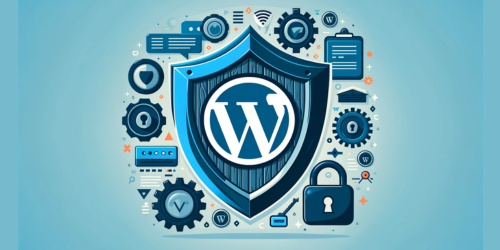Have you ever wondered how the WordPress Plugin Directory functions as the heart of your website’s functionality? In this digital era, WordPress plugins are not just add-ons; they are the essential tools that empower, enhance, and elevate your website’s capabilities. Intricately intertwined with PHP, these plugins are the unsung heroes that seamlessly blend into your website’s fabric, often unnoticed but always impactful.
WordPress plugins, ranging from simple design elements to complex security solutions, are akin to the versatile Swiss Army knife for your website. Each plugin, written in PHP, the scripting language that is the backbone of WordPress, serves a unique purpose, transforming your site from a static webpage into a dynamic, interactive experience. PHP’s role in this process is pivotal – it’s the language that tells these plugins how to behave, ensuring they work in harmony with your website’s core.
In the coming sections, we will unveil the mysteries of locating, understanding, and managing the WordPress Plugin Directory, a repository that is much more than just a storage space. It’s a treasure trove of tools waiting to be discovered and utilized to their full potential. Let’s embark on this journey to master the art of WordPress plugins, shall we?
Key Take-Aways
- Focus on locating and utilizing the WordPress plugin directory in PHP.
- Emphasize practical steps for plugin development and management.
- Address the technical aspects of finding and working with plugin directories.
1. Locating the WordPress Plugin Directory in PHP
Navigating to the WordPress Plugin Directory in PHP is like embarking on a quest to uncover a hidden gem. To begin, it’s essential to understand that WordPress, a beacon of efficiency, provides several functions to locate this directory with ease. Utilizing functions like plugin_dir_path(), plugin_dir_url(), and plugins_url() is a foolproof way to find your way through the labyrinth of files. These functions are not just shortcuts; they are the GPS for your coding journey, ensuring you never lose your way in the complex file structure of WordPress.
The significance of using these WordPress-provided functions cannot be overstated. They offer a layer of abstraction, shielding you from the underlying complexities and potential future changes in the WordPress core. Hard-coding paths, in contrast, is like building on quicksand — it might seem solid at first, but can lead to instability as your website evolves. For a deeper understanding, you can refer to How to get plugin-directory url() in WordPress?
2. Understanding the Structure of the WordPress Plugin Directory
The WordPress Plugin Directory is akin to a well-organized library, each shelf laden with books (files) of various genres (PHP, JavaScript, CSS). This directory is not just a random collection of files. It’s a meticulously arranged space where each file type has its designated place, ensuring a harmonious balance between functionality and accessibility. Understanding this structure is pivotal for efficient plugin development and maintenance.
The PHP files are the heart of your plugins, dictating their core functionality. JavaScript files add interactivity, making your website come alive with every click and scroll. CSS files, the aesthetic wizards, ensure that the plugins not only work well but also look good doing it. For more insights into the file hierarchy, you can visit this detailed guide.
3. Creating and Managing Plugins in WordPress
Creating a plugin in WordPress is akin to crafting a bespoke piece of art. Start by choosing a unique name for your plugin, a name that resonates with its functionality and essence. Then, forge your plugin’s home by creating a dedicated folder and PHP file. This is where your plugin’s journey begins, where you breathe life into your code.
The steps that follow are akin to nurturing a plant. Add a file header, infusing your plugin with identity. Program your plugin, embedding it with functions and features. Compress your plugin folder, making it sleek and ready for deployment. The final flourish is activating the plugin on your WordPress site, akin to unveiling a masterpiece in an art gallery. For a step-by-step guide on this creative process, WP Buffs offers a comprehensive Searching WordPress Plugin Directory.
4. Best Practices for Plugin Development in PHP and WordPress
Embarking on the journey of plugin development in PHP and WordPress is an exhilarating adventure. To ensure this adventure leads to a treasure trove of functional and effective plugins, there are certain best practices to adhere to. Utilizing PHP and WordPress techniques effectively is not just about writing code; it’s about writing poetry that your website understands and responds to.
Key strategies include using WordPress’s in-built functions and APIs, ensuring your plugins are in harmony with the core WordPress framework. Regularly updating your plugins and adhering to WordPress coding standards are like tuning a musical instrument, ensuring it plays the right notes every time. For an arsenal of techniques, WPPedia offers a comprehensive guide for PHP version of WordPress development.
5. Common Challenges and Solutions in Managing WordPress Plugins
Managing WordPress plugins can sometimes feel like navigating a ship through stormy seas. Common challenges include plugin conflicts, outdated code, and compatibility issues with the core WordPress updates. However, every challenge brings an opportunity to find solutions that make your website more resilient and efficient.
One key strategy is regular plugin audits, ensuring that each plugin is up-to-date and compatible with your WordPress version. Another is having a robust backup and testing strategy, akin to having a lifeboat on your ship. This ensures that even if something goes wrong, your website’s integrity remains intact. For more solutions to common plugin challenges, explore WordPress Developer Resources.
6. Conclusion: Maximizing Efficiency with WordPress Plugin Directory
In the grand tapestry of WordPress, the Plugin Directory is a cornerstone that underpins the functionality and versatility of your website. Throughout our exploration, we’ve uncovered the methods to locate this directory using WordPress’s own functions, emphasizing the importance of these tools over hard-coded paths for stability and efficiency. We’ve delved into the organized structure of the directory, highlighting how each PHP, JavaScript, and CSS file plays a crucial role in the overall harmony of your site’s operations.
Creating and managing plugins, we’ve learned, is an art form balanced with technical acumen. By following structured guidelines for plugin development and embracing best practices, we ensure that our plugins are not just functional but also efficient and harmonious with WordPress’s core. Tackling common challenges with a strategic approach further solidifies the resilience and performance of our websites.
As we conclude, remember that managing the WordPress Plugin Directory efficiently is a continuous journey of learning and adaptation. By adhering to the best practices discussed and staying attuned to WordPress’s evolving landscape, we can ensure that our websites remain dynamic, robust, and ever-responsive to our needs and those of our audience.
7. FAQ Section
Q: Where is my WordPress plugin directory?
The WordPress plugin directory is typically located in the ‘wp-content/plugins’ folder within your WordPress installation directory. For more insights delve into WPPedia’s article on searching WordPress Plugin Directory.
Q: How do I find the directory path of a plugin in WordPress?
To find the directory path of a plugin in WordPress, you can use the plugin_dir_path() function within your plugin’s PHP code.
Q: Where can I find WordPress plugins?
WordPress plugins can be found in the WordPress Plugin Directory, accessible through your WordPress admin dashboard or the official WordPress website.
Q: Where are plugins in WordPress files?
In WordPress files, plugins are located in the ‘plugins’ folder, which is inside the ‘wp-content’ directory of your WordPress installation.



